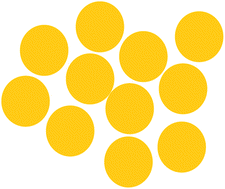Self-assembly of highly ordered conjugated polymer aggregates with long-range energy transfer

Applications of conjugated polymers (CP) in organic electronic devices such as light-emitting diodes and solar cells depend critically on the nature of electronic energy transport in these materials1, 2, 3, 4, 5. Single-molecule spectroscopy has revealed their fundamental properties with molecular detail6, 7, 8, 9, 10, 11, 12, 13, 14, and recent reports suggest that energy transport in single CP chains can extend over extraordinarily long distances of up to 75 nm (refs 13, 15, 16). An important question arises as to whether these characteristics are sustained when CP chains agglomerate into a neat solid2. Here, we demonstrate that the electronic energy transport in aggregates composed of tens of polymer chains takes place on a similar distance scale as that in single chains. A recently developed molecular-level understanding of solvent vapour annealing has allowed us to develop a technique to control the CP agglomeration process17. Aggregates with volumes of at least 45,000 nm3 (molecular weight ≈ 21 MDa) maintain a highly ordered morphology and show pronounced fluorescence blinking behaviour, indicative of substantially long-range energy transport. Our findings provide a new lens through which the ordering of single CP chains and the evolution of their morphological and optoelectronic properties can be observed, which will ultimately enable the rational design of improved CP-based devices.










 1500 nm) relative to the molecular size of
1500 nm) relative to the molecular size of 




![[greater, similar]](http://www.rsc.org/images/entities/char_2273.gif) 3% are probably unavoidable. The consequences of this are illustrated by way of a case study comparing literature data sets on hard-sphere viscosity and diffusion.
3% are probably unavoidable. The consequences of this are illustrated by way of a case study comparing literature data sets on hard-sphere viscosity and diffusion.
